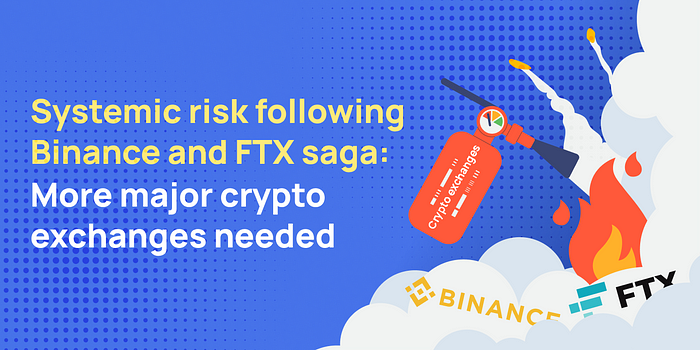
In the aftermath of a liquidity crisis, FTX agreed to a non-binding letter of intent (LOI) allowing Binance to acquire FTX. The deal was ultimately abandoned by Binance, citing the results of its due diligence. As one of the giants of centralized exchanges (CEX), the news of FTX’s downfall has caused widespread shock. In an industry where participants regularly say “they’ve seen it all,” perhaps many did not see this one coming. Along with the spate of collapsed crypto lending platforms such as Voyager and Celsius, the number of seemingly reputable places to trade and hold crypto assets has been dwindling. Ironically, one of those lending platforms, BlockFi, was bailed out by none other than Sam Bankman-Fried and FTX.
The downfall of FTX will have many consequences for the broader industry, one of which is a potential increase in the systemic risk within the crypto ecosystem. Systemic risk is a term borrowed from traditional finance (TradFi) and is defined as the risk to an entire financial system arising from the stress on a single or a group of entities. The stress of those entities propagates throughout the broader system due to the interconnectedness and interdependencies of various entities which make up the system. Here, we are strictly concerned with the systemic risk implications for just the crypto ecosystem, including the crypto asset markets, centralized service providers, decentralized finance (DeFi), and others.
Concentration of power
The failure of FTX leads to even greater concentration into the single largest centralized player in crypto. The industry loses another prominent counterparty, resulting in a further increase in the dominance of Binance. The vastness of Binance’s business touches many facets of the industry from spot trading to peer-to-peer (P2P), over-the-counter (OTC), derivatives, and much more. More and more participants in the crypto ecosystem are now connected to and dependent on one single firm.
The increase in power and dominance increases the likelihood of Binance becoming “too big to fail” (TBTF); another term borrowed from TradFi. In the aftermath of the great financial crisis of 2007–2008, failed US banking institutions were bailed out through merger transactions facilitated by the US Treasury and the Federal Reserve. The result was even larger banks combined by the likes of J.P. Morgan and Bear Stearns. These banks become so systemically important that their failure would result in disastrous effects on the aggregate financial system and the overall economy.
Counteracting forces
The industry needs more well-managed exchanges for healthy competition. Comprehensive regulatory oversight can help bring greater balance to the current state of the CEX industry. Regulation, and the licensing regime that comes with it, will help new entrants gain the trust of users by differentiating themselves from peers through higher standards, prudent risk management, sound governance, and transparency. Operating within the regulatory perimeter can indeed level the playing field and enhance competition.
The recent troubles related to centralized operators also spotlight the importance of the decentralized crypto ecosystem and its potential to offer mitigating features. According to a Coinbase Institute report, “Opacity, multiplicity of intermediaries, counterparty risk, and manual processes are risks that the crypto ecosystem mitigates for.” These are the very same risks that are often associated with centralized operators. It is apparent that decentralizing users’ crypto assets can reduce the risks arising from the failure of a centralized operator. However, the industry needs to build better self-hosting and custody solutions that are more approachable for the everyday user.
Author: 邢智超, XREX Director of Risk Management



